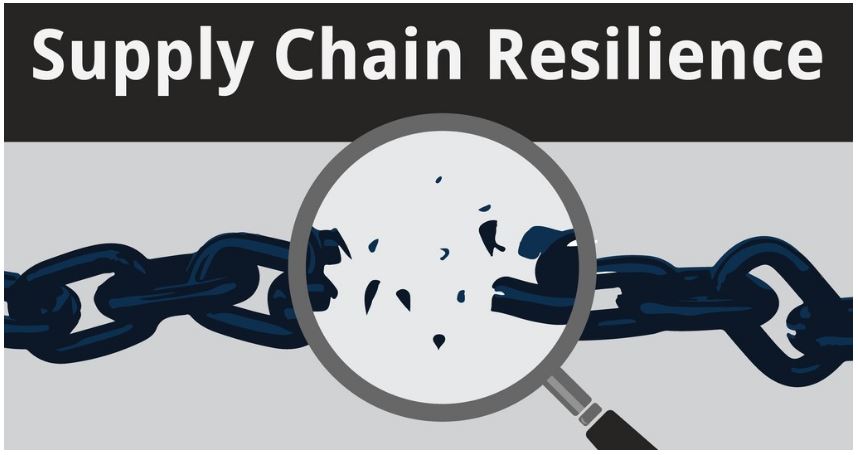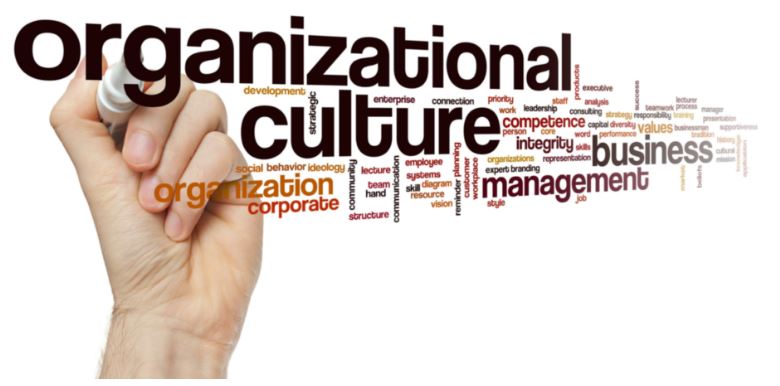Marketing in a Digital World: A Case Study of Harrods Digital Marketing
Digital Marketing at Harrods – The advancement in technology has ushered a new era of e-commerce. The internet has pushed the traditional marketing strategy into the back burners as business organizations struggle to keep up with increasing levels of competition due to globalization.
Business organizations have to keep up with the dynamic needs of the modern day customer who is well informed and has access to a variety of choices at the touch of his fingers. The proliferation of smart phones has further delocalized the internet and the customer is constantly bombarded by marketing gimmicks and adverts the moment he/she goes online.
The internet has further introduced new methods of serving the customer off site thus nullifying the need of the customer presenting himself/herself physically on site. Various business organizations have embraced the challenge proffered by the digital world. Manufacturers, wholesalers and retailers have all adopted electronic marketing in order to maintain their presence in the market.
This paper will investigate a retail organization, Harrods, located in the United Kingdom and appraise the role of marketing management in light of the challenges posed by the digital age.
Brief History of Harrods
Harrods is a retail organization located in London, United Kingdom. It belongs to the category of department stores among the various types of retail organization. Its beginnings can be traced to 1849 when one Henry Charles Harrod set up a grocery store at Brompton Road, south of Hyde Park in the Kensington Borough.
Harrods began the enterprise in single room with two assistants and an assistant in his employ. The grocery store soon expanded into medicines, perfumes, stationery, fruits and vegetables and the retailer soon acquired the adjoining buildings in order to cater for the business expansion. By 1881, Harrods had a total of one hundred people in its employ (Callery, 1991).
In December, 1883, the retailer would experience bad fortune when a fire razed it to the ground. However, the owner the organization made a quick turn around and rebuilt on the same location. Charles Harrod went on to sell his stock via stock market floatation to Edgar Cohen for a total of £120,000 in 1889. The new store became known as Harrod’s Stores Limited.
Harrods was the first retailer in England to put an escalator into their store. Harrods then underwent exchange of ownership two times. The House of Fraser acquired in 1959 before selling it off to the Fayed brothers in 1985. The Fayed brothers would eventually sell off the retailer to Qatar Holdings in May 2010.
Qatar Holdings is the sovereign wealth fund of Qatar. Harrods is currently Europe’s largest department stores and it occupies a five acres in term so land and as of 2013, it had 12, 000 employees working in its 330 departments. In 2017, its revenues were £2 billion and had a net income of £233.2 million. Harrods store is spread over seven floors and remarkable food halls. Harrods is listed on the London Stock Exchange (Callery, 1991).
The Retail Business Environment in the United Kingdom
Harrods departmental store is located in the United Kingdom, particularly in London where retail business is an important aspect of the London business environment. Retail organizations serve to link producers and consumers, serves as a source of employment and contributing to the overall economy of London.
Despite the rise of Ecommerce which has made it possible for producers to engage directly with end users, retail organizations still continue to play an essential role as go-betweens for consumers and manufacturers. This is because retailers have a unique array of skills and talents specific to their role of an intermediary.
The average household in the United Kingdom spends about £160 on purchasing retail products every week which amounts to almost to a quarter of the mean average spending (Barrett, 2015). This is a significant amount of money spent at retail outlets and is a source of employment for 0.4 million residents of London.
A larger proportion of these individuals work in the sales and customer care departments (Barrett, 2015). In addition, the retail sector is a source of part time jobs for young people. 21% of employees in the retail sector are aged 24 years and below in comparison to 9% in other sectors of the economy. The retail sector further serves to employ a significant number of women as 54% of personnel in the retail sector are women in comparison to 44% in other sectors (Barrett, 2015).
As of 2014, there were approximately 43,000 retail firms in the City of London (Barrett, 2015). These retail shops are distributed all over the City although there is a high density of retail firms in central London. The retail sector occupies approximately 17.0 million square metres of floorspace in the London.
The three boroughs of Westminster, Croydon and Kensington have the largest areas of retail floor space. These boroughs have at least fifty retail outlets for every square kilometer. The highest numbers of customers in these retail shops are local residents although a number of tourists frequent them.
In addition to the above economic impacts of retail stores, retail firms stimulate significant amounts of personal and goods transportation as well as creating a demand for the other segments of the economy which includes construction, logistics and warehousing.
The retail sector in London is growing and retail firms will continue to have more consumers than in the past. The population of London experienced a growth of 1.0 million between 2003 and 2013 having risen from 8.4 million during that time to 9.4 million. The UK government estimates that the London population will further grow by 1.7 million to 10.1 million by 2036.
This would translate to an additional 0.9 million households as new markets for the retail sector. The surrounding regions of London will also experience population growth from with the South and East of London expected to increase by 1.5 million and 1.0 million respectively by 2036. The number of tourists is expected to continue rising especially with the ease of restrictions on issuance of visas to Chinese tourists.
These figures indicate that the retail sector will continue to grow. The retail sector will have more and more older customers. For instance, the number of customers over the age of 90 was 0.6% in 2013 but this number will rise to 1.3% by 2036 (PWC, 2013).
Finally, the household income of London residents will rise faster than the growth rate thus implying that the consumers will be richer and thus will have increased spending power which would be a boon for retailers. Other demographic changes that will have a significant effect on the retail industry include the fact the average Londoner will have a higher literacy level ,will experience better health and that the population of Londoners will become more diversified.
Advances in information technology have changed the behaviour of the average London consumer as he is far more likely to segment his shopping procedure. Unlike in the past where a customer would discover a product in the retail shop, conduct research on the product at the shop by asking attendants questions and then pay for the good at the till, the increased literacy levels and access to the internet would trigger the consumer to do each of the activities at different places.
The customer might discover the product on Facebook while at work, conduct research on Google about the product while in bus and purchase the good online while at home.
Electronic and mobile-commerce are two new frontiers which consumers attach importance to when carrying out their shopping. E-commerce is steadily rising and online purchases in 2014 accounted for 11% of all sales values in London. E-commerce also encourages frugality as the customer can conduct online research for the best deals thus saving himself some amount of money.
E-commerce further encourages use of online discount retailers and consumers will tend to avoid high end retail department stores. Industry experts have also highlighted the development of a new trend whereby shoppers buy their groceries more often. This implies that consumers have intensified their frugality by buying less goods but more often in order to cut on wastage and possibly have access to fresh groceries. All of which are key to a successful digital marketing strategy.
The increased participation of London residents in the sharing economy has also reduced the amount of goods purchased by consumers. An example of sharing economy is Airbnb. In this setup, people rent out their unused assets to others.
As a result, there is reduced buying as more and more people rent out already purchased goods. Finally, the average London consumer places more value on enjoying the shopping experience rather than just having to successfully purchasing the good.
The average consumer gains more pleasure from browsing good online at the comfort of his home rather than physically examining goods which is much more expensive in terms of transport and time. Consumers are less likely to visit a retail store if the store does not provide an enjoyable experience (UKCES, 2014).
Challenges Faced by Harrods
Harrods is located in the centre of London in the Kensington Borough. In light of these, Harrods faces tough competition from 43,000 retail firms located in London. Its Kensington location makes it vulnerable to competition that numbers to 50 retail outlets per square kilometre.
Despite the fact that the population shall increase as well as the spending power, the reality is the number of retail industries will continue to increase thus further reducing the number of customers available for grabs (Wolny, 2014).
The changing characteristics of the average customer poses a threat to the number of customers that Harrods has can capture. The rise in E-commerce implies that many clients would prefer not to travel physically to the big stores as they could easily browse and research online for good.
Customers can get access to a variety of products offered by different competitors and thus discern for themselves where to get the best deals. Harrods is a premier store and this means that the prices of its goods are on the higher side. However, the pricing has not been an issue as clients have been coming to the store and accessing quality products hence they have had no complaints with the price.
With the rise of online shops and digital marketing, clients will choose cheaper goods from discount stores and will not be interested in quality. This will result in a significant loss of customers for the establishment.
Furthermore, Harrods has been a tourist attraction location for quite long, but the advent of online shops will offer tourists with alternate places to visit thus skipping the Harrods store or spending less time at the store. Harrods also shall face challenges as the age group of consumers becomes considerably older.
Older customers will not have the energy nor the time to walk around the 5-acre department store. Older customers would prefer to look up goods over the internet and have them delivered to their homes (Shin-Young, 2018). The fact that the London community has picked on the sharing economy culture implies that Harrods will have fewer customers venturing into the establishment over time. Harrods was facing a challenge to provide a new podium that could counter to market dynamics and changes in client behavior.
Transformation to Counter Changes to Digital Marketing
Harrods has instituted various changes in order to adapt its operations to technological changes. The store instituted new brand strategy, marketing, communications, visual merchandising, CRM, customer service, digital, personal shopping and media campaigns and operations.
Harrods further employed new members of staff in the upper echelons of management to spear head change that is affecting business operations. Harrods has went the way of providing product information more on online forums through text and images. It has set up a website where consumers can look at the catalogue of its goods, check the prices, the specifications and make online purchases as well as have the goods delivered to their doorsteps.
The online interface allows its consumers to give their opinions, suggestions, reviews and create their personalised shopping and wish lists. Harrods has also set up an online rewards scheme, flash sales and discounted goods in order to stimulate purchase of goods (Hart, Doherty and Ellis‐Chadwick, 2000). The Harrods website makes use of cookies to study their consumer behaviour and thus detect patterns
Consequently, the website will direct the consumer to their favourite sections of its online catalogue as well as making suggestions through use of artificial intelligence (Sunny and Anael, 2016). By allowing customers to make personal reviews about products that they have purchased, Harrods has managed to make use of consumers to conduct online promotion for products by Harrods.
In order to ensure that the customers do not post negative reviews, Harrods have invested in skilled employees, excellent information technology infrastructure, secure online financial transactions, fast transportation and courier services, a 24 hour online presence of customer service staff and an effective response team to cater for customer queries and complaints(Dennis, Joško Brakus and Alamanos, 2013).
In light of the stiff competition at home, Harrods website is accessible to international consumers who can place orders and have their products delivered regardless of their geographical location in the world. Harrods is no longer limited by its physical stores but has ventured into online sale of goods across international borders.
The premium store has also adopted the use of digital signage. This sort of signage entails screens in public spaces displaying video. Content may comprise advertisements, community information, entertainment and news. Digital signage aims to communicate with shoppers, hold them captive while they are in the mood to shop.
The retailer has invested in digital signage advertisements that are highly charged with factual information and thus arouse an intellectual experience. Category and brand decisions are made 40% of the time while the client is in the store. Digital signage works by inducing sensory and effective experiences and provoking approach behavior towards the products on advertisement with the end result being that the consumer becomes loyal to the store.
Digital signage serves to create an impression within the consumer that he is modern as the ambience increases his self-esteem and he becomes proud to be associated with the store due to it being fashionable and trendy (Dennis, Joško Brakus and Alamanos, 2013).
The next frontier to digital signage that Harrods invested in is interactivity, as well as using cameras to determine and identify gender and age of the consumer. These will empower Harrods to comprehend and customize its content to clients more effectively, while brands will have justification of their advertising investments. The store also wants to install several large, high-impact video walls which would facilitate the interaction of the consumer with a mobile device, to interact with content from mobile to screen and vice versa (Kent et al, 2018).
Harrods invested £200m in the redevelopment of its store in order to cater for the new needs of its transformed customer. The changes in its store included the setting up of the men’s super-brands floor, a new look toy department and the conclusion of its fine watches and jewelry division. The store also set up a women’s shoe store that it labeled shoe haven Shoe haven comprises reserved premium shopping suites for clients.
To capture women age 20 to 40, it set up a Candy Crush-style game christened Stiletto Wars where the top scorer earned a gift card to expend on shoes. To access the game, consumers had to download Harrods’ magazine app. Since 2010, the retailer has put out more than 35 magazines in print, digital and app formats from reaching 300,000 plus subscribers. This was a chief part of Harrods’ marketing stratagem to attract consumers.
More than 13,000 consumers downloaded the app to play in the game, and they each spend an average of 19 minutes playing (Wagner, Schramm-Klein and Steinmann, 2018). The Stiletto Wars game has been a success as over two hundred media shops wrote articles about the game and tied it to the opening of the Shoe Haven. The stories went viral on social media and eighty million consumers read the stories on social media. Harrods set up an E-commerce department to produce innovative ideas for the store to remain competitive in the digital market.
Harrods has also capitalized on social media communication in order to communicate the store’s brand values i.e., British, Luxury, Innovation, Sensation and Service. The store provides its customers with free access to 4G internet while shopping at the premises which serves to enhance the customer experience.
References List
Dennis, C., Joško Brakus, J. and Alamanos, E. (2013). The wallpaper matters: Digital signage as customer-experience provider at the Harrods (London, UK) department store. Journal of Marketing Management, 29(3-4), pp.338-355.
Callery, S., 1991. Harrods, Knightsbridge: The Story of Society’s Favourite Store. Random House (UK).
Kent, A., Dennis, C., Cano, M. B., Helberger, E., & Brakus, J. (2018). Branding, marketing, and design: Experiential in-store digital environments. In Fashion and Textiles: Breakthroughs in Research and Practice (pp. 275-298). IGI Global.
Hart, C., Doherty, N. and Ellis‐Chadwick, F. (2000). Retailer adoption of the Internet – Implications for retail marketing. European Journal of Marketing, 34(8), pp.954-974.
Wagner, G., Schramm-Klein, H. and Steinmann, S. (2013). Effects of cross-channel synergies and complementarity in a multichannel e-commerce system – an investigation of the interrelation of e-commerce, m-commerce and IETV-commerce. The International Review of Retail, Distribution and Consumer Research, 23(5), pp.571-581.
Wagner, G., Schramm-Klein, H. and Steinmann, S. (2018). Online retailing across e-channels and e-channel touchpoints: Empirical studies of consumer behavior in the multichannel e-commerce environment. Journal of Business Research.
Wolny, J. (2014). Marketing transformations: Re-thinking marketing, digital first. Journal of Direct, Data and Digital Marketing Practice, 16(2), pp.150-151.
Talikoti, S. (2019). Digital Marketing: The Vital Vitamin for The Future Marketing. SSRN Electronic Journal.
Sunny, E. and Anael, O. (2016). Mobile Marketing in a Digital Age: Application, Challenges & Opportunities. British Journal of Economics, Management & Trade, 11(1), pp.1-13.
Barrett, A. (2015). Retail in London: Looking Forward.
Ellis-Chadwick, F. (2013). History of online retail.
Hart, C., & Laing, A. (2014). The consumer journey through the high street in the digital era. Southampton: University of Southampton.
PWC. (2013). Demystifying the Online Shopper: 10 Myths of Multichannel Retailing. New York: PWC.
UKCES. (2014). Understanding Skills and Performance Challenges in the Wholesale and Retail Sector. London: UKCES.
Digital Marketing Relevant Blog Posts
Marketing Dissertation Examples
Digital Marketing Dissertation Topics
Digital Branding Marketing Dissertation
Did you find any useful knowledge relating to digital marketing at Harrods in this post? What are the key facts that grabbed your attention? Let us know in the comments. Thank you.






